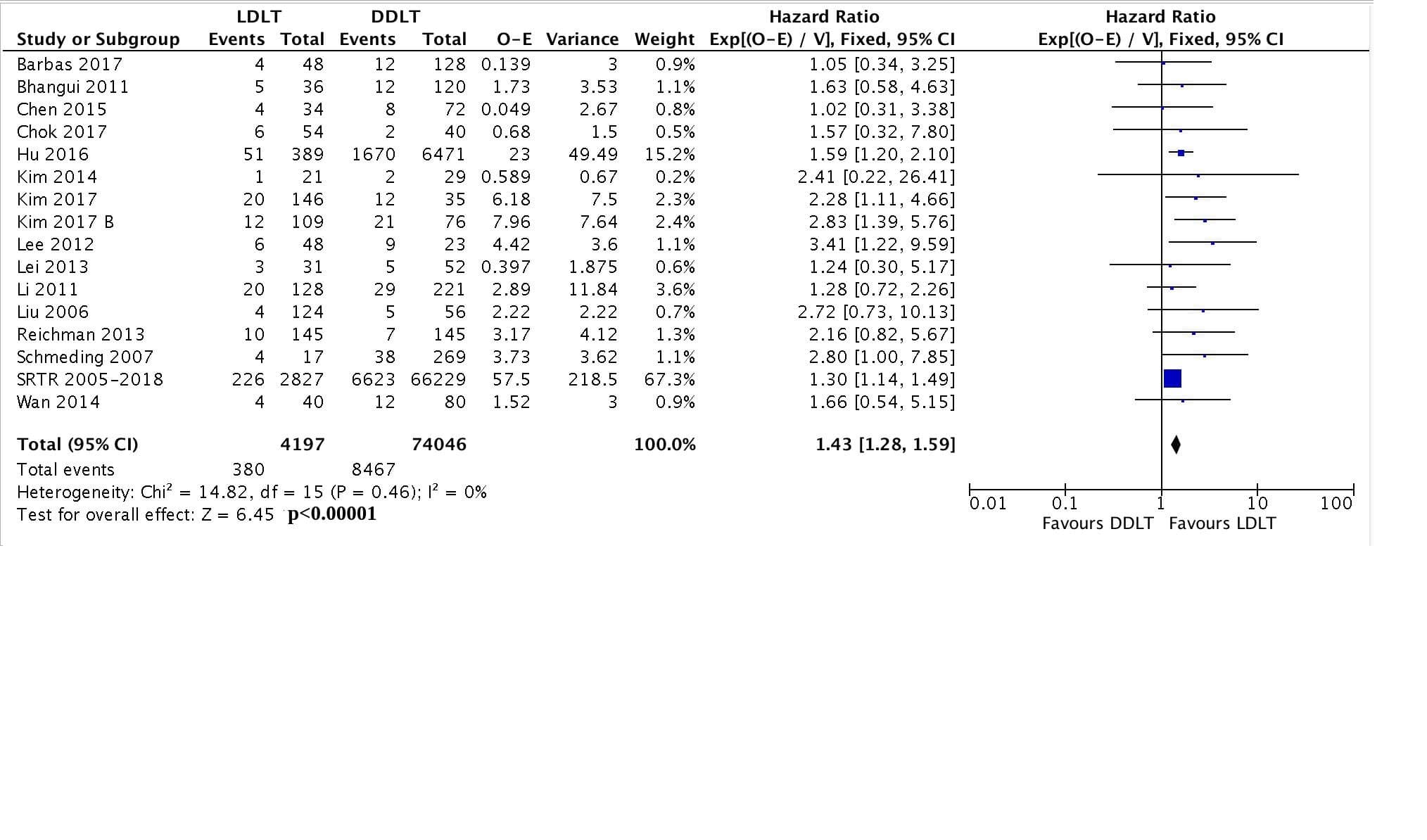Adult Living Donor Liver Transplantation Results in Superior Patient and Graft Survival When Compared to Deceased Donor Liver Transplantation: A Systematic Review and Meta-Analysis
1Surgery, abdominal transplat, University of Southern California, Los Angeles, CA, 2University of Southern California, Los Angeles, CA, 3Surgery, abdominal transplat, Keck Medical School, University of Southern California, Los Angeles, CA
Meeting: 2020 American Transplant Congress
Abstract number: 368
Keywords: Liver, Liver grafts, Living donor, Survival
Session Information
Session Name: Liver: Living Donors and Partial Grafts I
Session Type: Oral Abstract Session
Date: Saturday, May 30, 2020
Session Time: 3:15pm-4:45pm
 Presentation Time: 4:27pm-4:39pm
Presentation Time: 4:27pm-4:39pm
Location: Virtual
*Purpose: Center-specific or national registry studies have shown that living donor liver transplantation (LDLT) decreases waitlist mortality, reduces waiting time, and may offer superior patient survival over deceased donor liver transplantation (DDLT). The aim of this study was 1) to compare outcomes for LDLT and DDLT by analyzing the SRTR for the U.S. and 2) combining this with a meta-analysis of published studies.
*Methods: 1) Outcomes for adult (>18 years at LT) LT recipients were analyzed using SRTR data from 2005 to 2018.2) A systematic literature search was performed to identify studies reporting outcomes of adult LDLT and DDLT (2005-2018). Studies with pediatric, multi-organ/re-transplant recipients, acute liver failure, data from U.S. patients, or those with overlapping cohorts were excluded. Fixed- and random-effects models were used for generating pooled estimates.
*Results: SRTR-U.S. data demonstrated superior patient survival for LDLT vs DDLT recipients (p<0.0001 for 1, 3, and 5 years post-LT). LDLT recipients in the U.S. had shorter waiting time and lower MELD scores at LT when compared to DDLT. Meta-Analysis- Overall, 5513 abstracts were screened, from which 19 studies were included in this analysis. When including the SRTR data, 4197 LDLT and 74046 DDLT patients were examined. Superior patient and graft survival at 1, 3, and 5 years post-LT was observed for LDLT compared to DDLT [ 1-year OS, HR: 1.43 CI 95% 1.28-1.59, p<0.0001] (Figure 1). LDLT was associated with a shorter waiting time, lower MELD at LT, lower risk of post-transplant infections, and higher risk of biliary complications when compared to DDLT. There was no difference in the rate of hepatic artery thrombosis.
*Conclusions: This study represents the first comprehensive, global meta-analysis comparing outcomes of LDLT and DDLT in adults. LDLT is associated with improved patient survival, shorter waiting time, and lower MELD at LT, despite posing a higher risk of biliary complications.
To cite this abstract in AMA style:
Barbetta A, Aljehani M, KIM M, Tien C, Ahearn A, Schilperoort H, Sher L, Emamaullee J. Adult Living Donor Liver Transplantation Results in Superior Patient and Graft Survival When Compared to Deceased Donor Liver Transplantation: A Systematic Review and Meta-Analysis [abstract]. Am J Transplant. 2020; 20 (suppl 3). https://atcmeetingabstracts.com/abstract/adult-living-donor-liver-transplantation-results-in-superior-patient-and-graft-survival-when-compared-to-deceased-donor-liver-transplantation-a-systematic-review-and-meta-analysis/. Accessed December 16, 2025.« Back to 2020 American Transplant Congress

